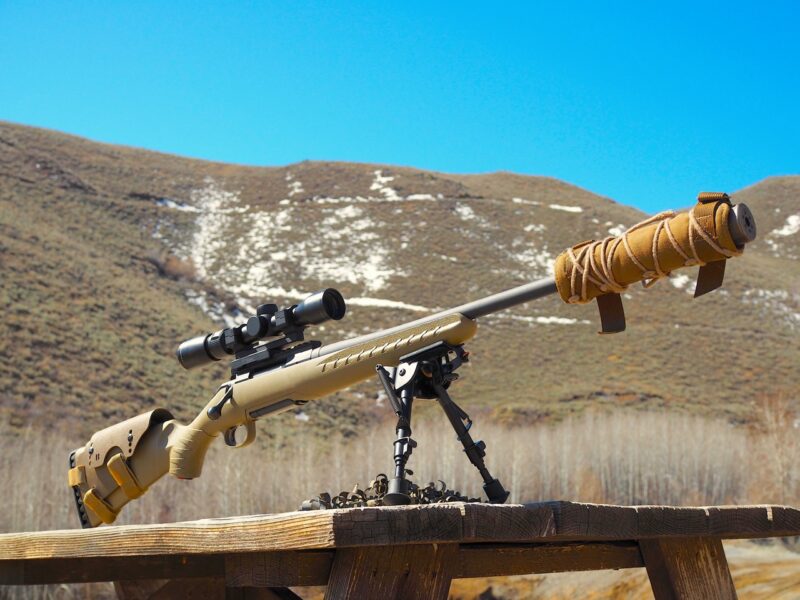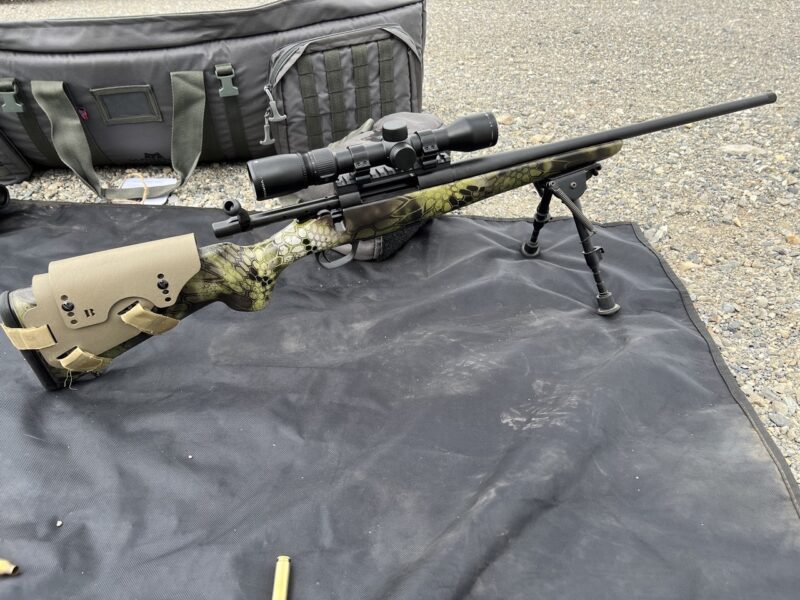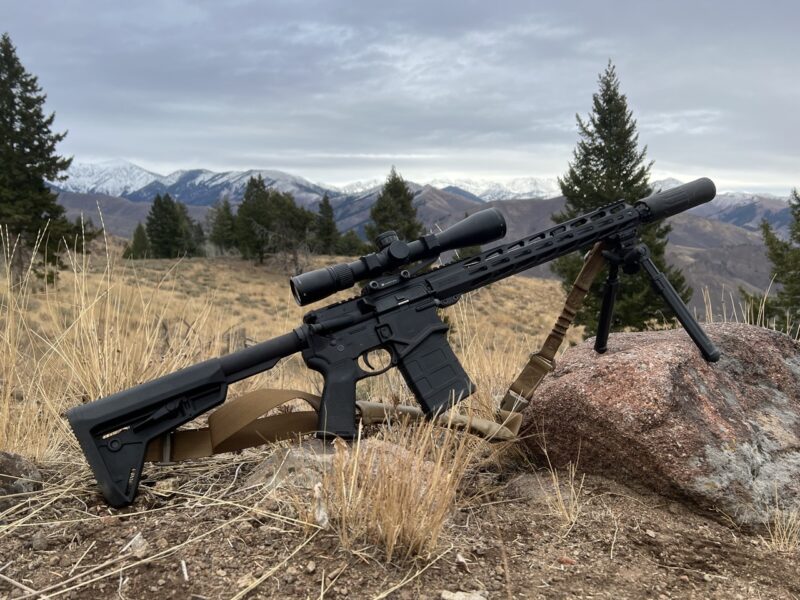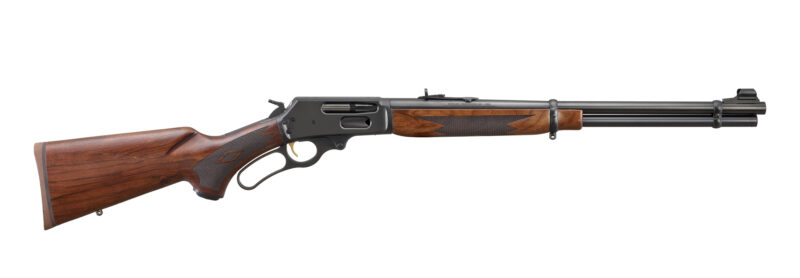OutdoorHub
Good Rifles For Deer Hunting
Across most of North America, it’s deer season, or it will be soon. If you’re looking for a new
deer rifle, and you don’t know where to start, we’re here to help.
What makes a good deer rifle?
Finding the right deer rifle is a bit of a trick question, because many jurisdictions have fish-and-game laws that prohibit rifles that are perfectly legal in other areas. For instance: In Pennsylvania, you can’t use a semi-automatic rifle for deer hunting. In Ohio, hunters must use a rifle with a straight-walled cartridge; the same rifle would be legal if chambered in .44 Magnum, but not if it was chambered in .30-30. And in some areas, rifles aren’t legal at all; hunters must use a shotgun or bowhunt.
Once you figure out what your region allows, then look for a rifle that suits your hunting style. Will you be sitting in a box blind, taking long-range shots across a cornfield? Or maybe you’re hunting the wide-open plains or mountain ranges of the west? A scoped bolt-action rifle with MOA accuracy or better is probably what you want. But if you’re mucking through the swamp bottoms of the southeast, or tracking big smashers in deep snow in the New England mountains, then your shooting distances are probably going to be shorter. You want a fast-shooting, easy-to-carry rifle—maybe a lever-action carbine, or a semi-auto or pump-action.
Historically, outdoor writers thought your deer rifle should have at least 1,000 ft-lbs of energy at the ranges you’re shooting. In other words, if you’re shooting out to 250 yards, then you want a cartridge that hits with at least 1,000 ft-lbs of energy at that range. You can find this ballistics information easily on the internet; most cartridge manufacturers publish the data for their commercial loads. I’m not saying this is gospel truth, but for decades, hunters set this as the standard energy needed to push through bone and muscle to take out a deer’s vital organs.
Remember, though: High-powered rifles will punish at both ends. Magnum-itis has caused many a poor shot as the hunter flinched, letting many bucks survive to another day. Something like a 7mm Magnum might be useful where you hunt, but if you’re close enough, there isn’t a deer in North America that can survive a well placed shot with a .243 or .30-30. Find a rifle that you shoot well and learn to hunt within its capabilities, and yours—don’t just buy the loudest, hardest-hitting cannon you can find.
And one final thing that some hunters don’t think about until it’s too late: Make sure you buy a rifle that you can find ammo for. An uncommon caliber like .38-55 or 6mm Magnum might tickle your fancy, but if you need to find ammunition in a hurry before leaving on a hunt, it might not be possible.
Got it? With all that in mind, here are some rifles to consider:
1. Ruger American

The last 20 years has seen a massive increase in the amount of affordable bolt-action rifles for deer hunting. There are plenty of excellent choices on the budget-friendly market, but the Ruger American might be the current best of the bunch. An adjustable trigger comes standard, and the short 70-degree bolt throw means the action cycles quickly. A Picatinny rail scope mount is installed from the factory, making it easier for a shooter to mount up their optic of choice, and no matter what style of hunting you’re into, there’s a Ruger American to match. The Ranch models will appeal to hunters in states with straight-wall cartridge laws, as they have options for 450 Bushmaster or 350 Legend.The Ranch is also one of the best bolt-actions for hunting thick woods, with a barrel just over 16 inches long.

Editor’s note: The Ruger American Ranch in .300 Blackout equipped with a suppressor is an outstanding first deer rifle for youth hunters, and is incredibly quiet when practicing with subsonic ammunition.
2. Remington 700

There are many, many variations of rifles built on the 700-series platform since its introduction in 1962; other manufacturers have also copied Remington’s action to build their own versions of this design. Production was interrupted when Remington went bankrupt a few years back, but they’re busy producing this rifle again. With a tang safety, and left-hand versions available, it’s suitable for any shooter. And with iron-sight versions, stainless versions, choice of synthetic or classy-finished wood stock depending what model you buy, and various barrel lengths—there’s a Remington 700 for any situation or environment. There’s even a muzzleloader version. I’m partial to the Model 700 BDL seen above, but you can pick from the rest of the lineup here.
Howa Superlite

This made-in-Japan rifle is ideal for someone who wants light weight without sacrificing quality. The Howa Superlite weighs well under five pounds (unloaded, with no scope) and comes with a lifetime warranty. It’s built from quality components such as Stocky’s furniture, Limbsaver recoil pad, and internals that are carefully designed with long-term reliability in mind. Ask around, and you’ll find the people who own Howa hunting rifles are also impressed with their accuracy. You are limited to a choice from four chamberings—6.5 Creedmoor, .308, .243 or 7mm-08. But all those calibers are excellent choices for deer hunting.

Editor’s note: The How Superlite series is just about the lowest cost accurate ultra light weight rifle for deer that’s currently on the market. I’ve used it to great effect on grueling mountain hunts where you want to run light and fast, and harvested multiple big game animals with mine.
Browning BAR

Not everyone wants a bolt-action. Some hunters want rapid follow-up shots, and the Browning BAR has perhaps the best legacy of any semi-auto deer rifle. With a reputation for better accuracy and reliability than other lower-priced alternatives, the BAR is worth saving up for. Depending what model you want, there’s a wide choice of chamberings. Most of the BARs you see in the wild are in .30-06 or 7mm Magnum, but the BAR Mark III also comes in softer-shooting .243 or .270 if you want less recoil. The gas-operated action will also absorb some of the kick. These are heavy, expensive guns, but they are probably the premier conventional semi-auto hunting rifle in North America right now—if you get into the world of ARs, that’s another story entirely.
AR-15/AR-10

Speaking of ARs: The heavier-caliber AR-10 would be the smart choice for deer. However, an AR-15 will work with the right ammunition—some hunters might want to take an AR chambered in 300 BLK or even 7.62×39 for heavier bullets, but even .223/5.56 ARs can harvest a whitetail ethically if the owner is an accurate shooter with appropriate hunting ammo at a reasonable range. For years, the 62-grain Federal Fusion load was the standard for .223 on whitetails, but Winchester now has a Power Point load in .223, and other manufacturers also offer the equivalent. But be careful: In your jurisdiction, this round may not be legal for deer hunting. And even if it is, if you use inappropriate ammo, or you make a bad, wounding shot, you will be scorned by a lot of other hunters. And you will probably deserve it. AR-pattern rifles will work well for competent shooters, but if you or your equipment isn’t up to the task, use something else.While I wouldn’t recommend buying an AR specifically to hunt deer, if I did, I’d try to get one with a 24-inch barrel, to push those small pills as fast as possible. The Bushmaster V-Radicator might do the trick. A faster-twist barrel might be better for heavier bullets, though.
Marlin 336

The classic whitetail rifle is a made-in-America .30-30 lever-action, and the Marlin 336 is one of the best ever made. It’s easily scoped, if you want to add an optic. It’s easy to disassemble for cleaning, and the pistol grip soaks up recoil better than the straight stocks of competing designs, although it is not as fast-handling. It’s hard to find a better gun for the woods, and with Hornady’s LeverEvolution ammunition, the .30-30 will now reach out to longer ranges than ever. The wood-and-blued-steel Classic is the version of the 336 that most hunters will want, but since they bought Marlin, the new owners at Ruger have also re-introduced a stainless-finish version, which might be preferable if you hunt a lot in soggy conditions.
Henry Long Ranger

If you want more hitting power than a .30-30, the Henry Long Ranger will reach out with a lot
more muscle, with 6.5 Creedmoor, .308 or .243 all available. Easy to scope, the Long
Ranger can be ordered with or without iron sights, and comes with a detachable magazine for easy loading. The straight stock makes for quick shouldering. The modern action with rotary lock-up makes for accuracy on-par with a bolt-action rifle. And it’s made in the USA!

Savage 110

Like the Remington 700, the Savage 110 has been made for a long, long time, and has a
reputation for reliability. The Savage usually comes in at a lower MSRP but accuracy doesn’t
suffer from that price tag; the user-adjustable AccuTrigger and the AccuFit stock available on
most models help a lot here. Savage makes versions of this rifle for long-range hunting, for
ultralight mountain hunting, or even bush-busting hunts at close range. The 220 slug
shotguns are also based on this design. I’m a fan of the all-weather finish on the long-
barreled 110 Storm, but if I was going to hunt with iron sights, or I wanted a suppressor, I’d
buy the 110 Magpul Scout. Not traditional, but the deer won’t notice.
Remington 7600

No deer rifle article is complete without a mention of the Remington 7600 (or 760). The
Benoit family, perhaps the best-known deer hunters of the 20th century, used these pump-
action rifles to lay down big bucks all over the northeast, but especially in Maine, where they
tracked them down in the snow. The Benoits inspired generations of other big woods
trackers to buy their own 7600s, and Hal Blood, perhaps the best-known tracker and guide in
Maine today, still uses one. So do countless other deer hunters in the northeast, and also in
Pennsylvania, where it’s the fastest shooting deer rifle allowed (semi-autos can’t be used for
deer). A free-floating barrel makes this rifle surprisingly accurate, too. There’s only one
problem: Remington doesn’t make the 7600 anymore, so you’ll have to shop the used
market.
The post Good Rifles For Deer Hunting appeared first on OutdoorHub.
